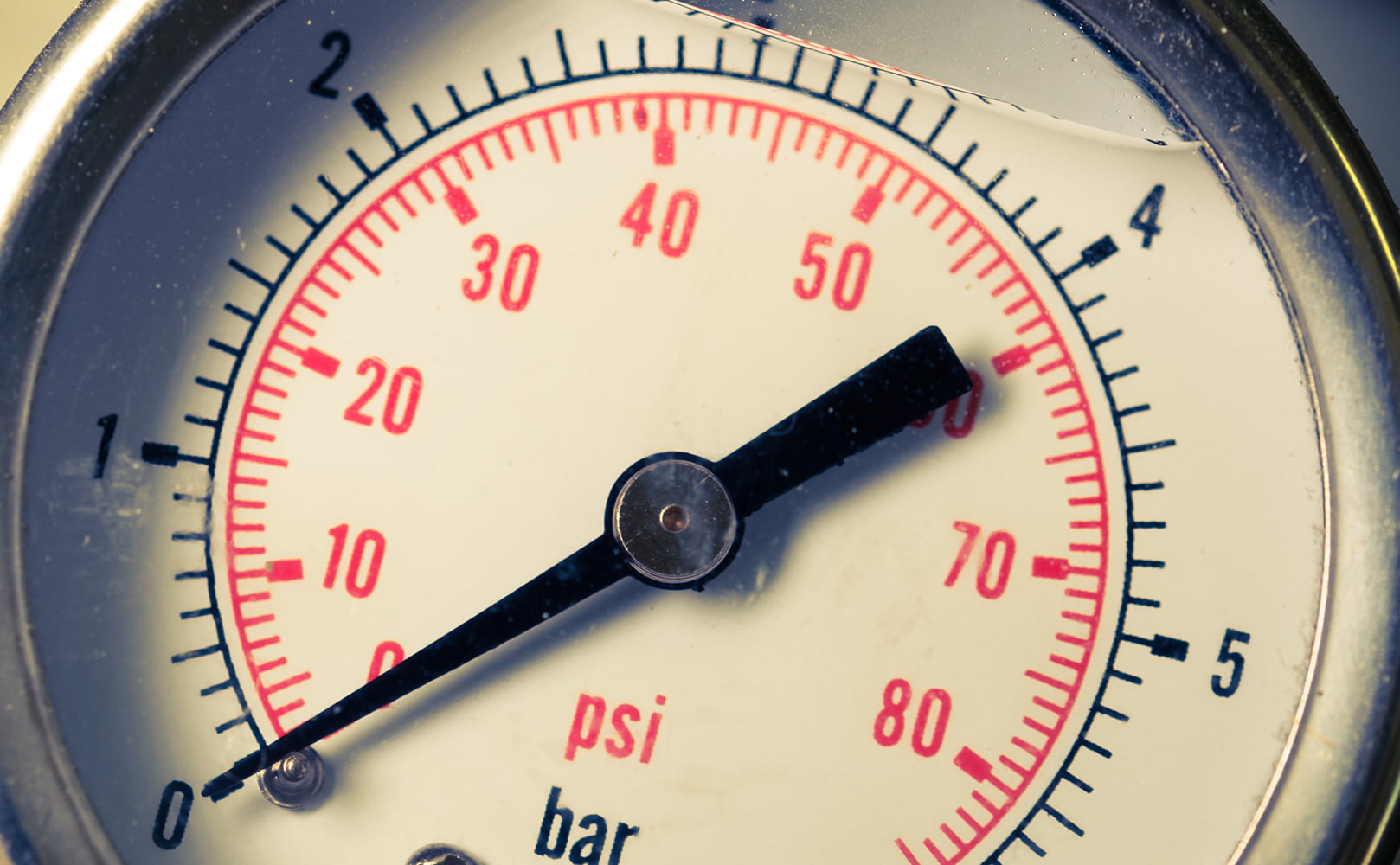How to Check Air Pressure in a Reverse Osmosis Tank
Written by: Alexandra Uta // Last Updated: Mar 13, 2023
This page may contain affiliate links. If you buy a product or service through such a link we earn a commission at no extra cost to you. Learn more.
If you have recently noticed a change in the pressure of your filtered water coming from your RO faucet, it may be a good idea to check the pressure of your reverse osmosis tank and recalibrate it if necessary.
But don’t worry; it isn’t as daunting as you might think and can be done with a few simple steps.
Here’s how!
Key Takeaways
Here is how to check air pressure in a reverse osmosis tank:
- Close the water supply.
- Disconnect and empty the RO tank.
- Pump the remaining water out.
- Measure the PSI of the empty tank.
- Reconnect.
How to Check Air Pressure in a Reverse Osmosis Tank
If you are worried about the air pressure in your reverse osmosis tank, checking it is a little fiddly but not difficult; you simply need to follow these steps:
Tools
You will need a bicycle tire pump or compressor, and a pressure gauge.
1. Close the Water Supply
Shut off the system’s water supply and close the storage tank valve. Open the RO dispenser to drain any water sitting in the tubing.
2. Disconnect and Empty the Storage Tank
The tank will need to be disconnected from the rest of the RO unit and taken to an area where the water can be drained, usually outside. Open the tank valve and drain out as much as you can.
3. Pump the Remaining Water Out
There will still be some water left in the tank. You will need to use the bicycle pump or compressor. To get this out, pump air into the air valve.
4. Measure the PSI of the Empty Tank
Measure the pressure of the empty tank with your pressure gauge. It should sit somewhere between 6-8 psi, but the value could be listed on your user manual or label for your individual tank.
5. Reconnect the Storage Tank
Once your psi is within range, reconnect the tank to the RO system, open the tank valve and the feed water valve, and let the tank refill.
The Ideal Pressure Level
This depends on the tank size and its model; the ideal psi may vary between brands and makes. Usually, it sits between 6 and 8 psi, but you may want to check with the manufacturer.
How to Add Pressure to an RO Tank
If you have drained your tank and tested the air pressure, and it doesn’t fall within the 6-8 psi range or the manufacturer-suggested ranges, then you must manually adjust it. It is simple to do when the tank is empty, so follow the instructions above to drain it properly first.
If your psi is too low, slowly and carefully add pressure with your compressor or bike pump until your pressure gauge reaches the suggested psi.
If your pressure is too high, then decrease it by pushing the Schrader valve, which will release some of the air.
Why Do Reverse Osmosis Tanks Loose Pressure?
If you’ve noticed a decrease in your water flow, it may be the result of normal wear and tear on your RO tank. Over time and with age, air seeps out, diminishing its ability to store pressurized water. You can check this by isolating the storage tank and seeing if the RO system is still producing water or lifting the storage tank to see if it is heavier than usual. A heavier tank means more water and less air.
What’s a Reverse Osmosis Tank and How Does It Work?
A reverse osmosis storage tank is a specialized piece of equipment designed to work in synergy with your RO system without the use of electric pumps.
The main thing to note about RO storage tanks is that they are hydropneumatic, meaning they contain both water and air. The air in the tank is pressurized, which is what pushes the water up through the RO faucet without the use of electricity.
The tanks contain a water chamber and an air chamber, separated by a bladder. When water fills the tank, the air pressure increases. Once that pressure reaches a certain level, the automatic shut-off valve in your system will be triggered, and your system will halt the filtration process as the tank is full. When water is used and the pressure drops again, the ASO will open back up, and filtration will begin again. This mechanism is handy, as it ensures you will not overfill your tank.
Storage tanks with a smaller capacity usually have the air sitting below the water, and larger tanks have water on the bottom and air on the top.
If you have any questions about how to check reverse osmosis tank pressure please don’t hesitate to leave a comment below!
Information provided on BOS is for educational purposes only. The products and services we review may not be right for your individual circumstances.
We adhere to strict editorial guidelines. Rest assured, the opinions expressed have not been provided, reviewed, or otherwise endorsed by our partners – they are unbiased, independent, and the author’s alone. Our licensed experts fact-check all content for accuracy. It is accurate as of the date posted and to the best of our knowledge.


